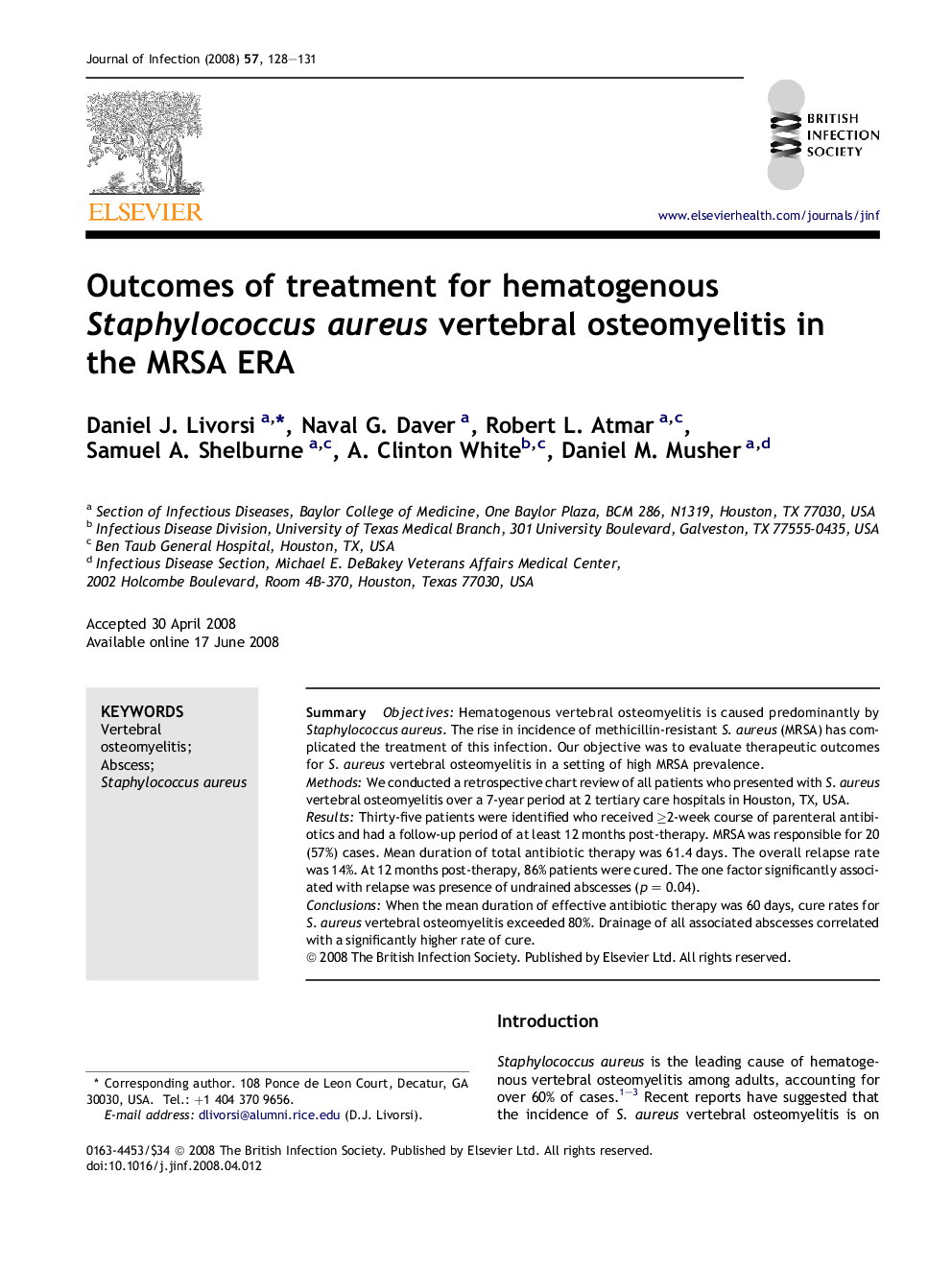| Article ID | Journal | Published Year | Pages | File Type |
|---|---|---|---|---|
| 3376237 | Journal of Infection | 2008 | 4 Pages |
SummaryObjectivesHematogenous vertebral osteomyelitis is caused predominantly by Staphylococcus aureus. The rise in incidence of methicillin-resistant S. aureus (MRSA) has complicated the treatment of this infection. Our objective was to evaluate therapeutic outcomes for S. aureus vertebral osteomyelitis in a setting of high MRSA prevalence.MethodsWe conducted a retrospective chart review of all patients who presented with S. aureus vertebral osteomyelitis over a 7-year period at 2 tertiary care hospitals in Houston, TX, USA.ResultsThirty-five patients were identified who received ≥2-week course of parenteral antibiotics and had a follow-up period of at least 12 months post-therapy. MRSA was responsible for 20 (57%) cases. Mean duration of total antibiotic therapy was 61.4 days. The overall relapse rate was 14%. At 12 months post-therapy, 86% patients were cured. The one factor significantly associated with relapse was presence of undrained abscesses (p = 0.04).ConclusionsWhen the mean duration of effective antibiotic therapy was 60 days, cure rates for S. aureus vertebral osteomyelitis exceeded 80%. Drainage of all associated abscesses correlated with a significantly higher rate of cure.
